Architect and designer Sophie Dries, who was also trained in contemporary art, draws inspiration both from the Age of Enlightenment and from contemporary art. In parituclar, Arte Povera, and its use of noble and natural materials (wood, stone, marble, metal), and part of a search for sustainability, is a great source of inspiration in her work. Dries’ aesthetic universe is characterized by a mixture of luxury and authenticity where modernity, elegance and comfort are balanced in a coherent and daring way. She has worked with various art collectors to create beautiful and well-balanced spaces for their art collections.
Sophie revealed to LARRY’S LIST her favorite artists to see in collector homes, how she incorporates the essence of Arte Povera into her interior design, what artists and designers she personally collects, as well as her vision for future trends in interior design.
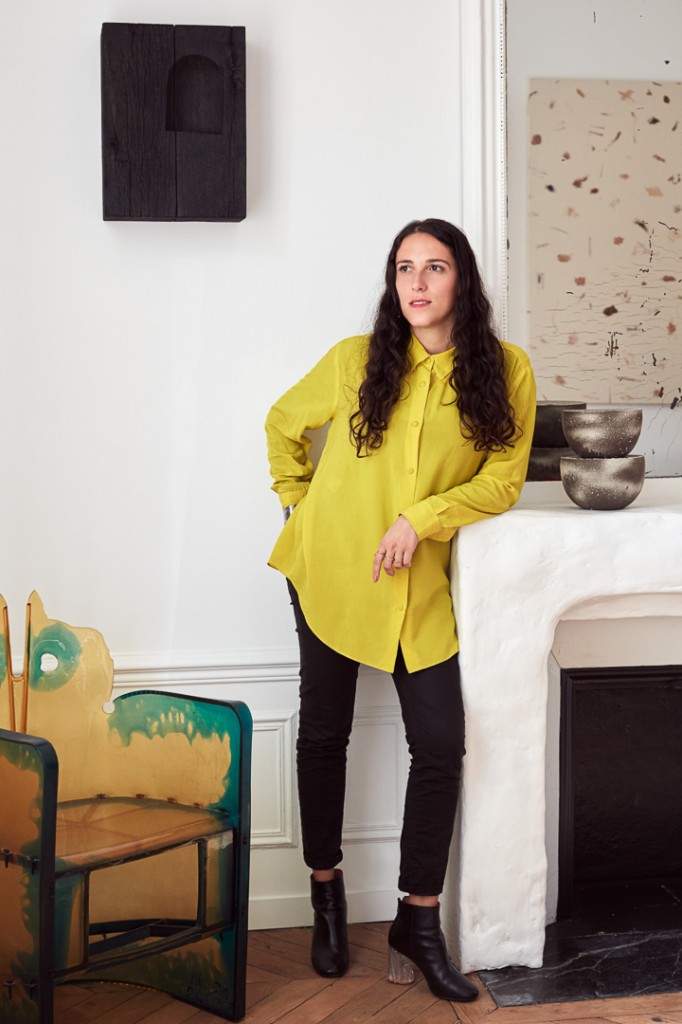
11 Questions with Sophie Dries
What is your number-one rule when designing a space to best compliment an art collection?
I imagine the space with axes and symmetry, like a filmmaker or photographer, so that every space have some focus point of view, and it becomes the perfect space for art.
A well-proportioned space is then easy to furnish and display art; symmetry has been the key since antiquity.
How do art collectors differentiate from your other clients?
Art collectors are definitely more open-minded clients because they understand irony as well as experimentation, plus they respect your creative persona.
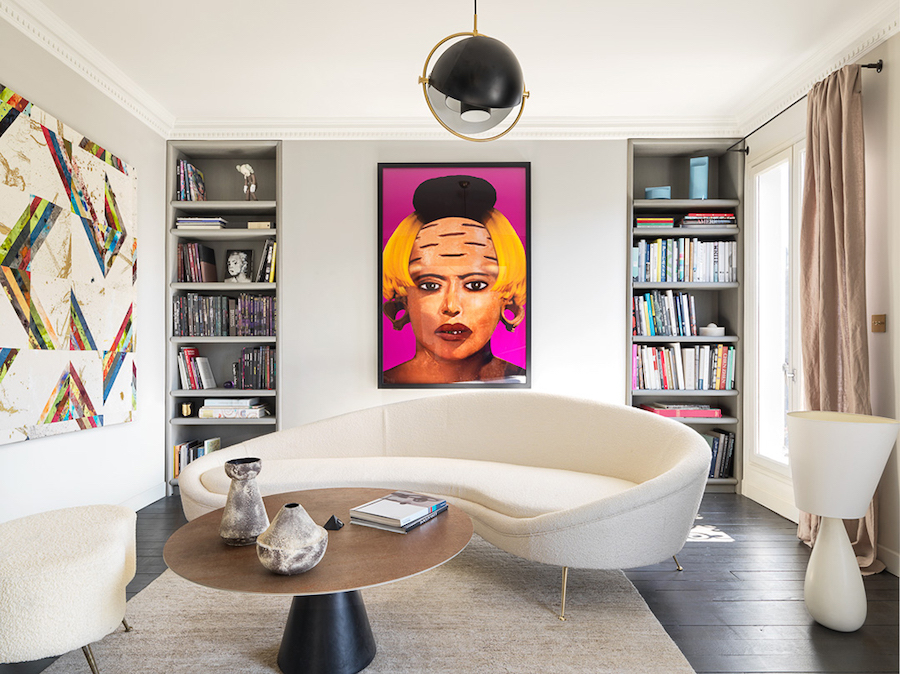
Would you share some of your personal favorite artists that you love to see in collector homes?
I do support a lot of artists of my generation, and I try to have around me a creative community, like Ana Karkar, Giulia Andreani, Anastasia Bay, Jean Marie Apriou, Elizabeth Glaessner; or more established living artists, such as Laurent Grasso, Tursic & Mille, Andra Ursuta, Michael Armitage, Adrian Ghenie, Taryn Simon, Matthew Barney, Elizabeth Peyton; and legendary artists, like Domenico Gnolli, Francis Bacon, Wolfgang Laib, Peter Doig, Richard Prince, Franz West, Bruno Gironcolli or Jerome Bosche, and Munch or De Chirico.
Interiors and art often seem to be in flawless harmony. Yet, we know from our collectors that artworks eventually change. How does your design accommodate an evolving art collection?
The space has to be independent from the artworks, it has to be beautiful and well-balanced with changing artworks; you never match colors of space or furniture with the artworks! The art is the extra cherry on the cake that makes the magic happen, but it should remain out of any decorative condition. It is spices in cuisine, it make everything vibrate, but it shouldn’t be obvious.
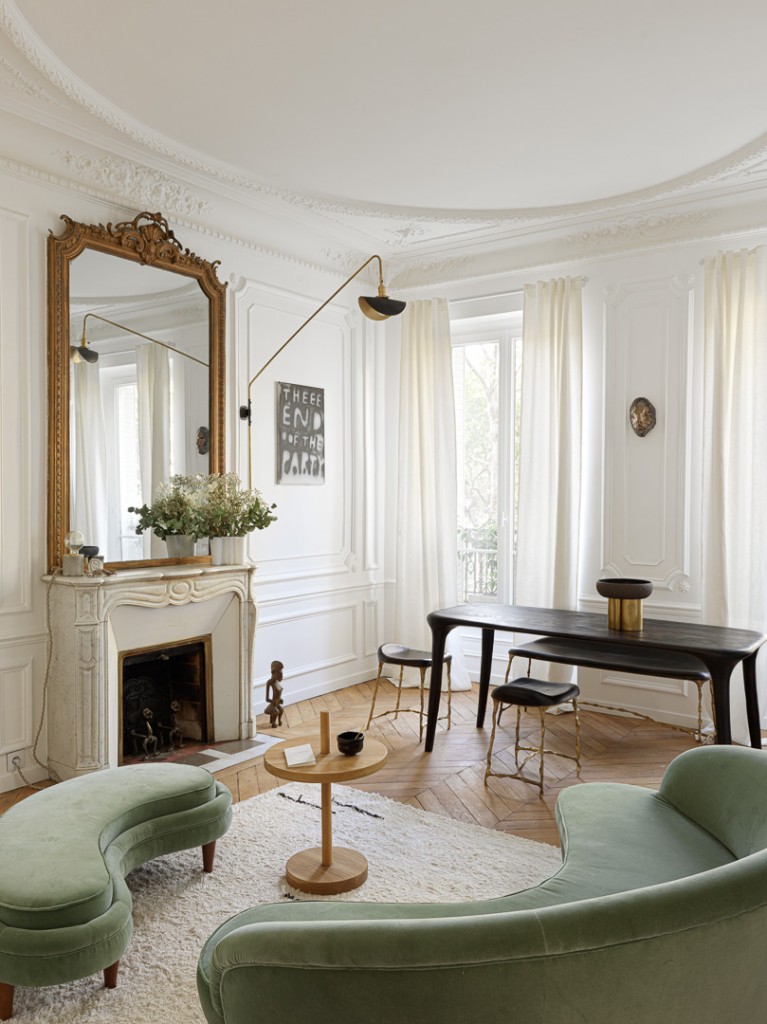
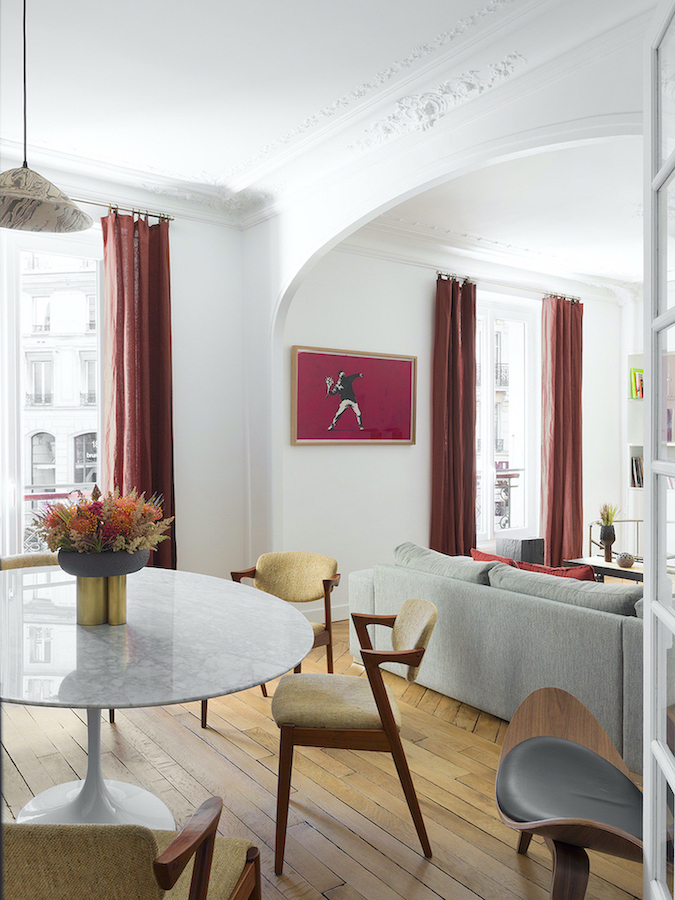
How did you develop an interest and affinity with Arte Povera? How has that influenced your interior design style?
In Arte Povera, there was philosophical questions on our consumption society, the artists turned those concepts into their use of materials, and especially of raw materials and alteration of them. Inspired by this process of brutality on the textures and getting rid of popping colors or any pleasant finishes, I kept the experimental approach and the taste for the paradox between the raw and the precious.
Could you tell us more about your own personal collection? Which pieces are closest to your heart?
I would not define myself as an art collector, but a collectible design collector (contemporary designers and vintage 80/90s) who also lives with art. I cannot afford my clients’ art collections, but I have the chance to be part of a creative community, so I buy from young artists or swap with friends; I also buy at charity sale and works on paper; and also, I have a very generous collector client that gifted me many works also to support some artists we both love.
I bought recently a Domenico Gnolli etching, I have a small Giulia Andreani painting, etchings by Laurent Grasso, a silkscreen by Jean-Luc Moulène, artworks by Nico Vacellari and David Douard, some drawings of designers and architects, like Andrea Branzi, Nathalie Du Pasquier drawings, quite many photos from Raymond Depardon, Antoine Dagata, Ed Templeton, Ren Hang, and Ryan McGinley.
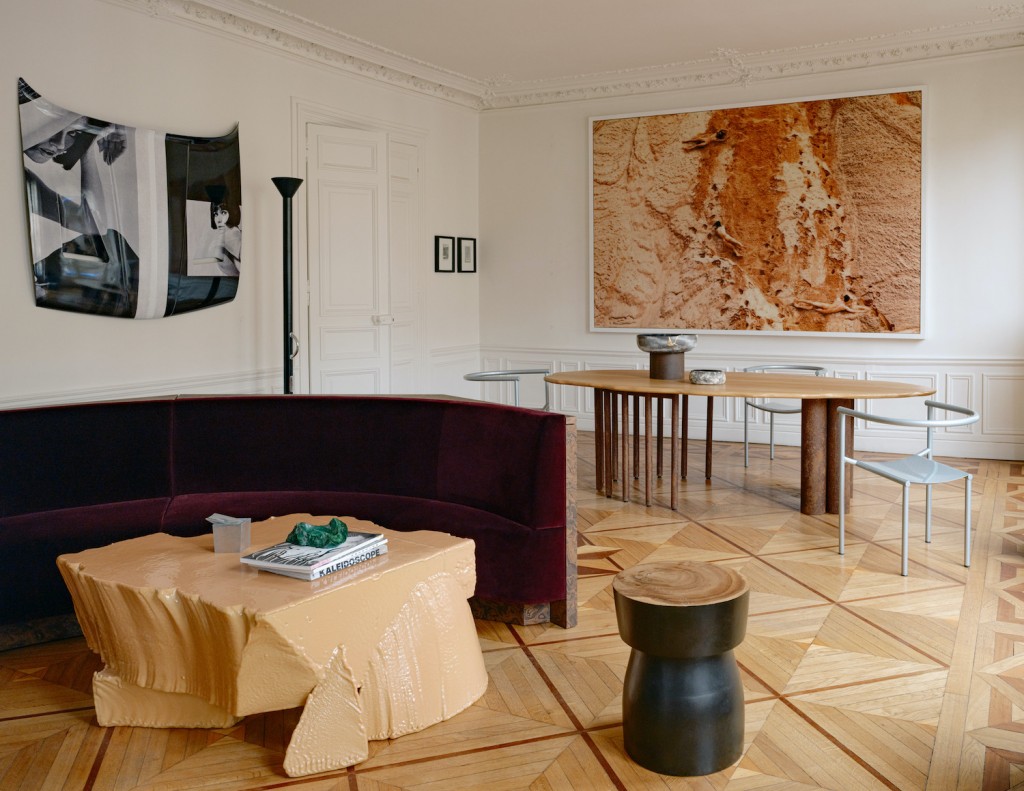
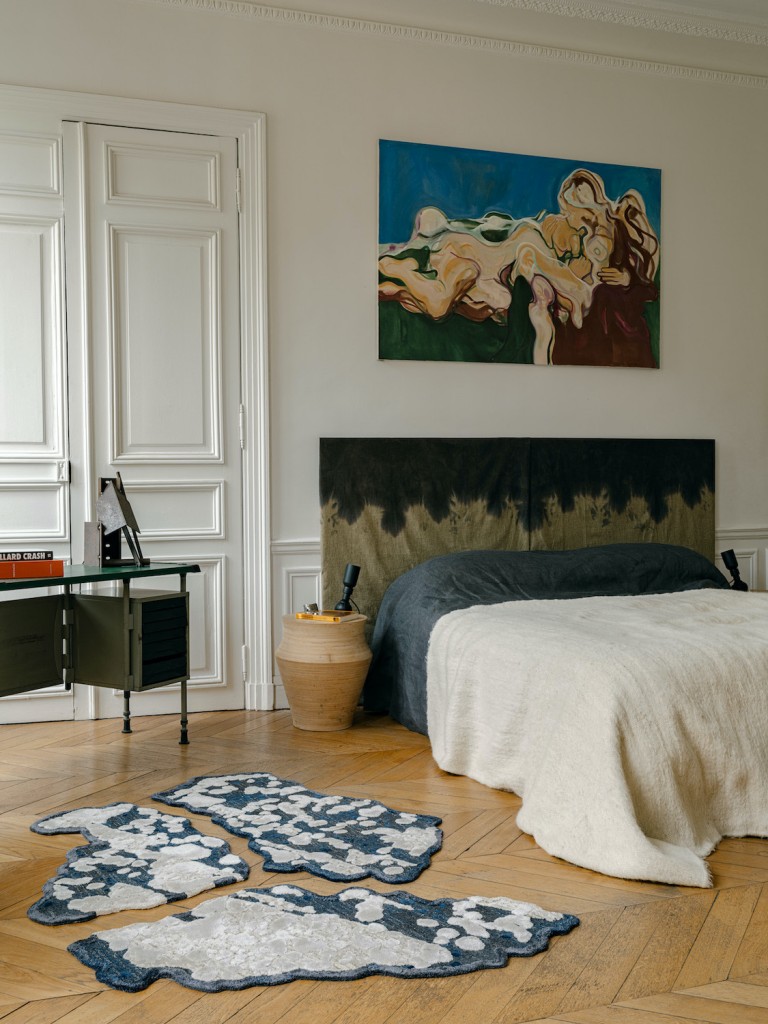
In the art world we sometimes see artworks and art installations that look stunning in the .jpg but then when seeing the actual works, they are comparatively disappointing. How do you balance the need for creating livable, usable spaces with curating that “Instagram moment”?
Spaces are meant to be experienced, and for me, the most important is actual living space. I never preconceived a project before visiting it. I need to feel the light, the volume. And then, if you do a great interior design with stunning art collection, the photos will be amazing. Instagram hits that are deceptive in real are only zoomed-in images of details of small items and abstract textures; they are not real design, but abstract rather than actual spaces.
As a tastemaker, are there any trends from your perspective you could share with us? What can we expect to see in your future projects?
I think people have enough of groovy beige “bouclette” sofas, raw solid-wood stools, and mid-century woody vintage. I initiated already few years ago, but to me, the accurate vintage is now the 80/90s, or radically the opposite, like overdecorated middle-age wood buffet, or art-brut naïve furniture.
I always relate to natural materials with more texture or monochrome patterns rather than color blocks, so we’ll continue to explore burlwood, rusted metal, glass, raw stone cork, or papier-mâché. In terms of lines, I always try to be as simple as possible, but with full respect of the existing history of the space.
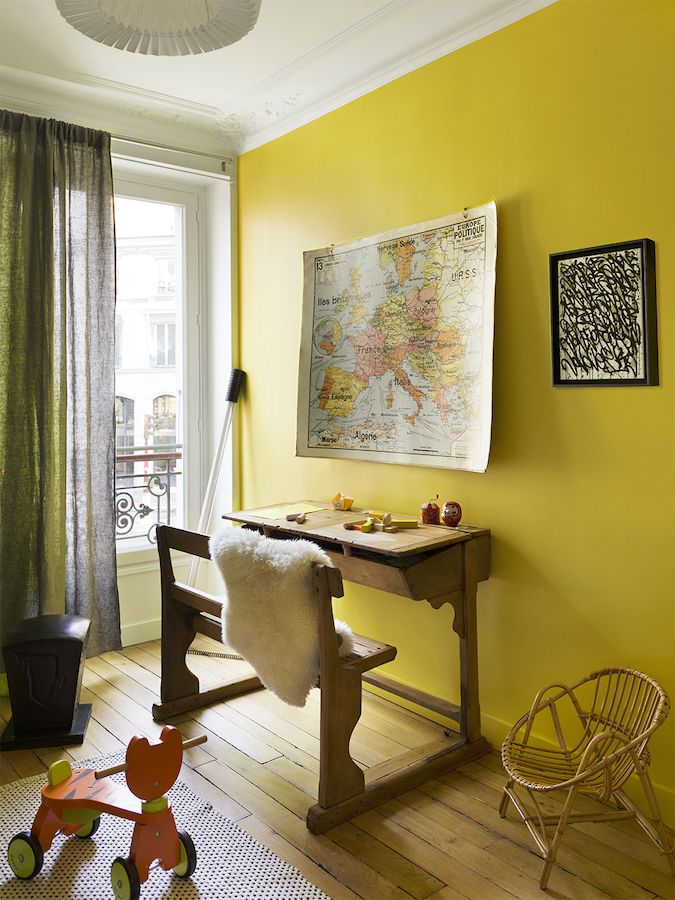
Do you also do the art sourcing for your clients? If yes, how do you do it? Work with galleries, commission artists directly, etc.?
Most of my clients are collectors, and I have interesting conversations with them when we design the project of where to place their pieces, or when they are acquiring new ones, they share a lot with me, but they are already very well-informed. When they don’t have a collection, I bring them to galleries and share what I like, and we collaborate with professionals. It is quite essential that a great space is filled with good art, and it has to remain personal and not to tick the boxes of what is to be a good collector.
We know that you have been commissioned by some art collectors. Can you mention some of the collectors you have worked for?
Most of my clients from another generation than me want to remain very discreet about it, but I also have some young clients like Paul Mouginot (digital artist &tech entrepreneur) or Raphael Gatel (senior at Galerie Perrotin) that are collectors and were happy to share portraits of the interiors I designed for them.
Can you share 5 of your most inspirational IG accounts?
Larry’s list! @larrys_list
@Jitjindar
@conformi_
@charlesgmagne
@m_r.a.a.d
@oskar.proctor
All images: courtesy of Sophie Dries





